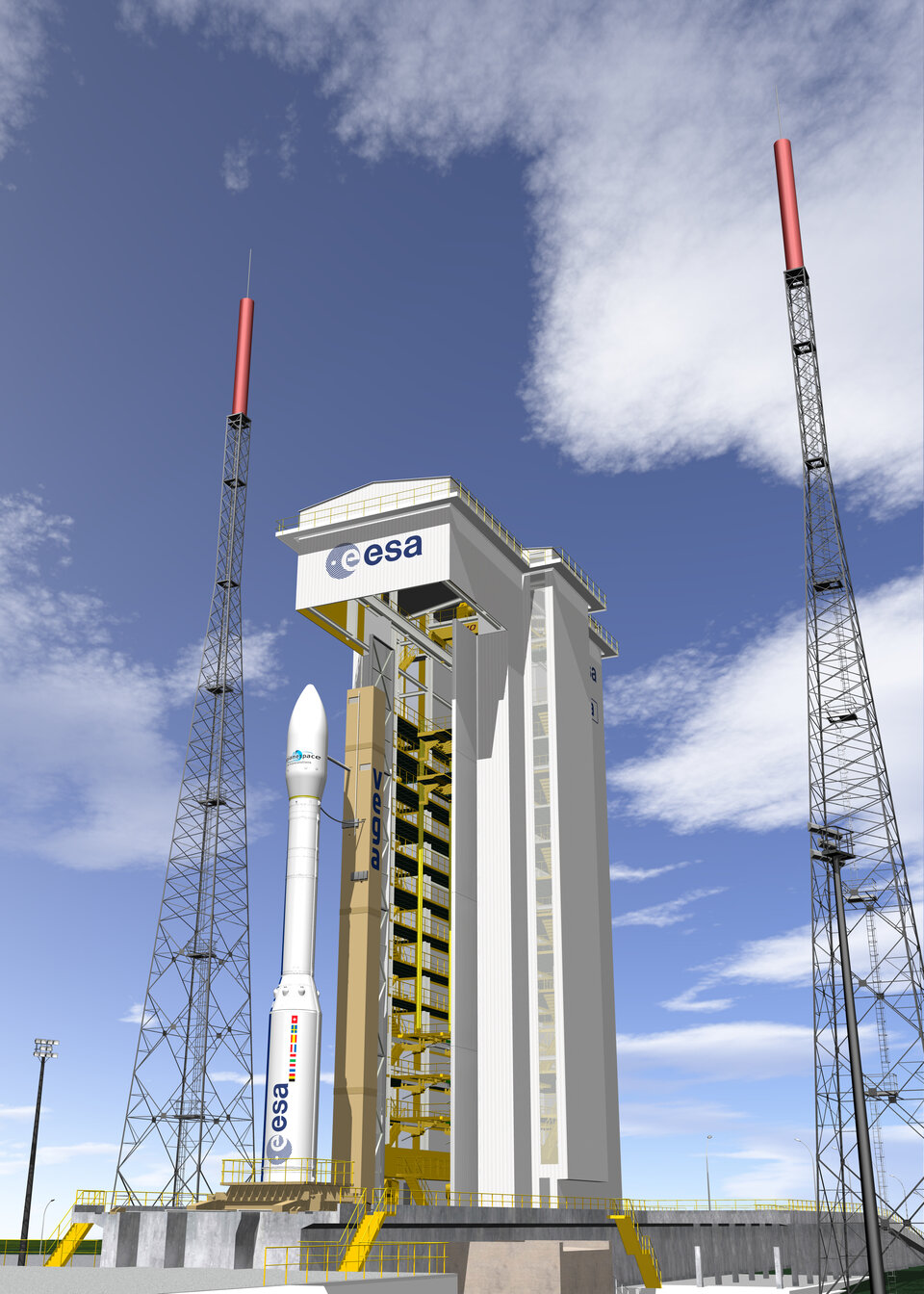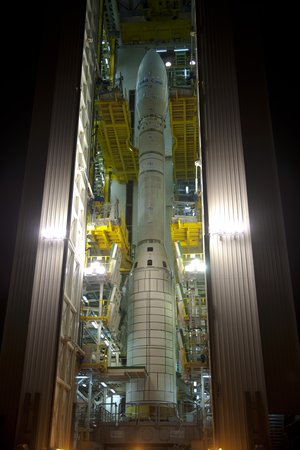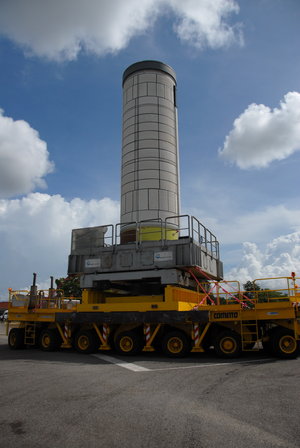First Vega starts journey to Europe’s Spaceport
The first elements of Europe’s new Vega small launcher left Italy last Thursday to begin their long journey to Europe’s Spaceport in French Guiana, marking the final step towards its inaugural flight in January.
After several intense weeks of checking the hardware and equipment – and the shipping paperwork – Vega’s Zefiro-23 and Zefiro-9 motors and the AVUM fourth stage were carefully packed and left Avio’s facility in Colleferro, where they were built.
During the night, the convoy headed to Livorno Harbour and the stages were loaded onto the MN Colibri, a vessel that is normally used by Arianespace to carry Ariane rocket components on the same route across the Atlantic Ocean.
It then departed on its first leg to Rotterdam in the Netherlands.
The fairing, built in Switzerland, the Dutch-built Interstage-1/2 structure that links the first two stages and the LARES laser relativity satellite from Italy’s ASI space agency will be loaded onto the vessel, which is scheduled to set sail on 6 October.
Some 18 days later, the ship will arrive at Dégrad de Cannes Harbour in Cayenne, French Guiana.

From there, the ship’s cargo will be taken by road to Kourou for mating with Vega’s P80 first stage, now undergoing final preparations in the Booster Integration Building.
The P80 solid-propellant motor, also built in Colleferro, awaits insertion of its igniter.
Vega’s first launch campaign
The three-month launch campaign will begin in November following the Flight Readiness Review on 13–14 October.
The first step will move the P80 stage to the pad for final testing of the thrust vector control system. The two solid-propellant second and third stages will then be added.
The campaign will continue with the integration of the AVUM – Attitude & Vernier Upper Module – and its fuelling, and further testing of the electrical systems and software controls.
Finally, the upper composite, comprising the fairing and the payload, will be mated with AVUM.
The payload for Vega's first launch is the LARES satellite, together with nine small CubeSats from European universities.
ESA, CNES, ASI and industry teams will arrive at Europe’s Spaceport for the launch campaign in November.

“With all of the elements for Vega’s maiden flight in Kourou by mid-October, we are now looking forward to beginning the launch campaign, which will be the final step before the first flight of Europe’s new rocket,” says Stefano Bianchi, Vega Programme Manager.
This first launch, the Vega qualification flight, is planned for January 2012 and will pave the way for five missions that aim to demonstrate the system’s flexibility.
Vega is designed to cope with a wide range of missions and payload configurations in order to respond to different market opportunities. In particular, it offers configurations able to handle payloads ranging from a single satellite up to one main satellite plus six microsatellites.
Vega is compatible with payload masses ranging from 300 kg to 2500 kg, depending on the type and altitude of the orbit required by the customers. The benchmark is for 1500 kg into a 700 km-altitude polar orbit.










